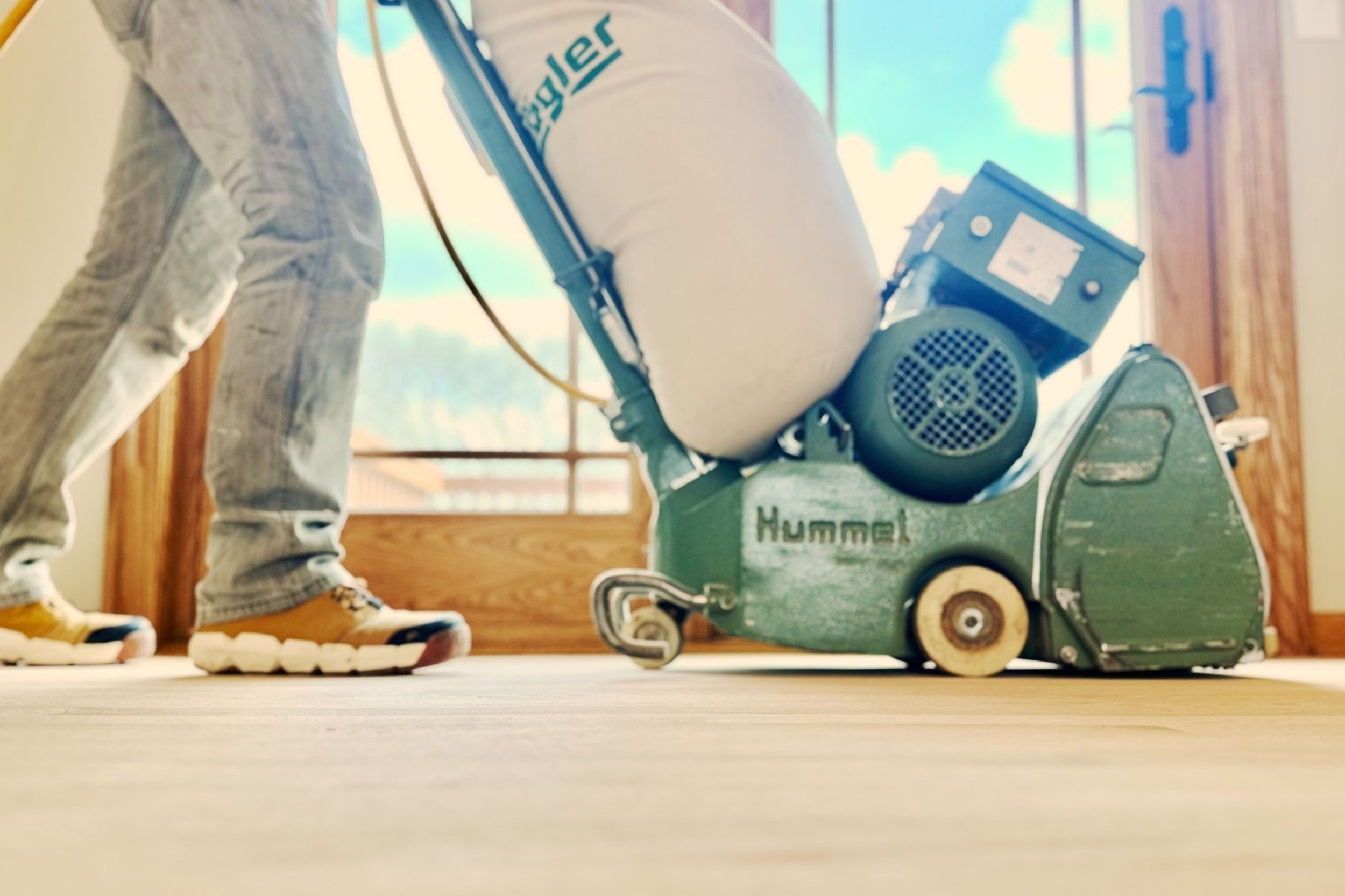
where nature and design groove together
about
Unmatched experience to craft your vision. Premium products to suit your space. Sustainable timber to ground your home – that’s Groove Hardwood Flooring. These elements converge, building lasting designs for families and individuals to flourish on. Creativity is at the core of this approach. Together, we will curate the path that brings your flooring concept to life, while ensuring that each step along the way is equally as enjoyable as the final result. Come groove with us.
services
-
Completing a full sand and finish on a hardwood floor will give your space a fresh start, removing the worn-out surface, revealing the beauty beneath. There's a rhythm to the process—steady, controlled, and methodical—working in sync with the grain of the wood. As the defects and roughness disappear, the raw floor becomes smooth and exposed, preparing for a finish that will bring out the natural warmth and character of the hardwood. It's a true transformation, revitalizing your floor, providing you a fresh space to vibe in. A full sand and refinish is recommended every 8-12 years.
-
A buff and coat is a maintenance process for hardwood floors designed to enhance protection and refresh appearance on your existing hardwood floors. The floor is lightly buffed with fine abrasives to remove minor scratches and surface imperfections preparing for adhesion of the new finish. These steps restore the floors sheen, strengthen its protective layer, and enhances your investment. Unlike a full refinish, the process doesn't remove any wood. This makes it a quicker and less invasive way maintain the floors condition, extend its lifespan, and keep you grooving on your hardwood. This process is recommended every 3-5 years.
-
Installing hardwood flooring is a blend of craftsmanship and artistry, transforming a space with timeless aesthetic. The process is both technical and creative, blending structure and design. Each tongue and groove coming together to create more than just a floor; it will be a lasting feature that will elevate the depth and character in your home.
-
Installing steps and trim is a detail-oriented process that adds the finishing touch to a space, enhancing both its function and aesthetic appeal. For steps, the process starts with careful measurement and alignment, ensuring that each tread and riser fits perfectly within the staircase framework. Precision is key, as each piece must be cut to exact specifications, allowing the grain of the wood to flow smoothly from step to step. The result is a staircase that is not only sturdy but visually cohesive, complementing the overall design of the space.
When it comes to installing trim—such as baseboards, crown molding, or door casings—the focus shifts to the finer details that frame a room. The trim is carefully cut and mitered to ensure tight, seamless joints at corners, providing a clean transition between walls, floors, and ceilings. Proper installation requires an eye for symmetry and craftsmanship, ensuring that the trim accentuates the architecture of the space while covering gaps and imperfections. The final product is clean and refined, elevating the room with a sense of completion and style.
-
Repairing, patching, and restoring hardwood floors is a meticulous process that involves demolition, removal and replacement of damaged planks and sometimes subfloor. It is important that the correct grade and species of new wood is selected so that there is a continuous flow. The flooring being replaced needs to then be sanded and refinished along with the existing hardwood surrounding it to maintain original harmony. Water damage, pet stains, and large gouges are common reasons for these repairs that should not go untreated.
-
Before installing hardwood floors, various types of demolition work are often necessary to ensure a clean, level, and stable surface. The scope of demo work depends on the existing flooring and the condition of the subfloor beneath. Here are some common types:
1. Carpet Removal: Old carpets and their padding are often the first to go. This involves cutting the carpet into manageable sections, pulling it up, and removing tack strips and staples. Carpet removal can reveal imperfections in the subfloor, which may need to be addressed before installation.
2. Tile Removal: For spaces previously covered in tile, demolition can be more labor-intensive. Tiles are usually pried up using tools like hammers and chisels, along with any mortar or adhesive left behind. This step is essential for creating a flat surface for the hardwood.
3. Laminate or Vinyl Removal: Laminate or vinyl flooring is often glued down and can require scraping or prying to lift the material from the subfloor. Depending on the adhesive, this can be a simple or laborious process, but all residue must be removed for proper hardwood installation.
4. Old Hardwood Removal: If you’re replacing old hardwood, this may involve carefully prying up the boards or, in some cases, using a saw to cut the planks. If the old wood is glued or nailed, removing nails or adhesive is necessary to prepare the subfloor.
5. Subfloor Repairs: Once the existing flooring is removed, the subfloor may need repairs, such as replacing rotted or damaged sections, leveling uneven areas, or adding moisture barriers. Ensuring the subfloor is in top condition is crucial for the hardwood’s longevity and stability.
This demolition process creates a clean slate for the hardwood installation, allowing the new floor to lay seamlessly and perform well over time.




